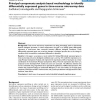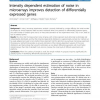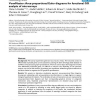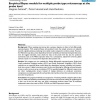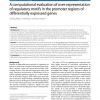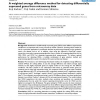106
Voted
BMCBI
2008
15 years 1 months ago
2008
Background: Time-course microarray experiments are being increasingly used to characterize dynamic biological processes. In these experiments, the goal is to identify genes differ...
103
click to vote
BMCBI
2008
15 years 1 months ago
2008
Background: Microarray pre-processing usually consists of normalization and summarization. Normalization aims to remove non-biological variations across different arrays. The norm...
130
Voted
BMCBI
2008
15 years 1 months ago
2008
Background: Most microarray experiments are carried out with the purpose of identifying genes whose expression varies in relation with specific conditions or in response to enviro...
112
Voted
BMCBI
2010
15 years 1 months ago
2010
Background: In many microarray experiments, analysis is severely hindered by a major difficulty: the small number of samples for which expression data has been measured. When one ...
BMCBI
2007
15 years 1 months ago
2007
Background: Deficiencies in microarray technology cause unwanted variation in the hybridization signal, obscuring the true measurements of intracellular transcript levels. Here we...
111
Voted
BMCBI
2008
15 years 1 months ago
2008
Background: This paper addresses key biological problems and statistical issues in the analysis of large gene expression data sets that describe systemic temporal response cascade...
89
Voted
BMCBI
2008
15 years 1 months ago
2008
Background: Microarray experiments generate vast amounts of data. The functional context of differentially expressed genes can be assessed by querying the Gene Ontology (GO) datab...
114
click to vote
BMCBI
2008
15 years 1 months ago
2008
Background: When analyzing microarray data a primary objective is often to find differentially expressed genes. With empirical Bayes and penalized t-tests the sample variances are...
109
click to vote
BMCBI
2010
15 years 1 months ago
2010
Background: Observed co-expression of a group of genes is frequently attributed to co-regulation by shared transcription factors. This assumption has led to the hypothesis that pr...
99
Voted
ALMOB
2008
15 years 1 months ago
2008
Background: Identification of differentially expressed genes (DEGs) under different experimental conditions is an important task in many microarray studies. However, choosing whic...
